 |
surfresearch.com.au
history : the racing 16,
1934
|
the australian racing sixteen : 1934

Frank Adler and Hollow Racing 16
cropped from Maxwell, facing page 117.
| home | catalogue | history | references | appendix |
 |
surfresearch.com.au
history : the racing 16,
1934
|

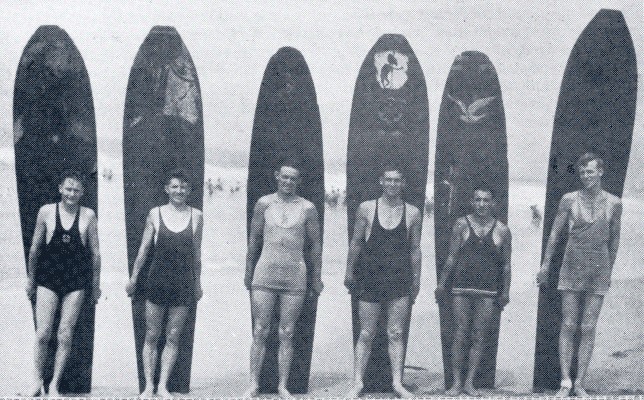 |
| Surfboat and
Surfboard riders, Manly Beach, circa 1930. 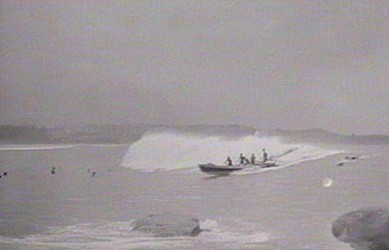 |
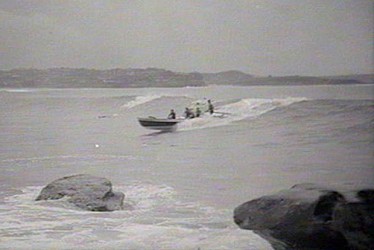 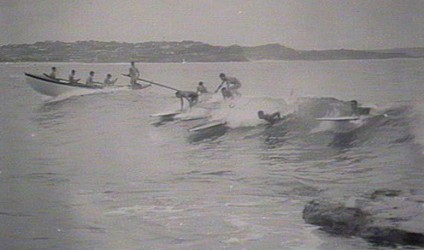 |
This craft was launched on the
1st September, 1935 by J. S. G. (Gordon) Worland, President of
the Illawarra Branch. It might also be mentioned that Gordon
Worland served in the capacity as Branch President from 1933
to 1945.
Gordon had shown a keen interest
in the reconstruction of the boat, visiting our club on a
number of occasions and it was a fitting tribute that he
should officially launch the craft.
The boat was eventually sold for
£1 to club member, Jim McMahon, for fishing."
|
members and the "Arthur Rodman", September, 1935. Thorn: Stanwell Park SLSC (1983) page 53. |
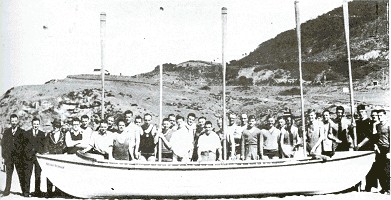 |
| In late 1935, Collaroy
SLSC member Bert Chequer, a noted surfboard shaper, used
his board in a mass rescue. Assisted by 13 year old Bill Abbott, who twice swam out with belts, and a goup of inexperienced juniors on the reel, they managed to successfully return a group of approximately 10 persons to safety. Brawley (1995), pages 96 - 97. Image right : Bill Abbott with Hollow Paddleboard, Collaroy SLSC, circa 1938. The solid wood boards were possibly shaped by Bert Chequer. Bob (Robert) Maladay's board features the Collaroy club emblem and his formal initials - RM. Brawley (1995), page 97. |
 |
|
Howell, R. and Howell, M.:
A History of Australian Sport. |
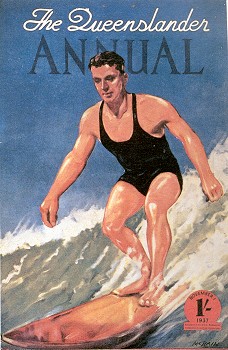 |
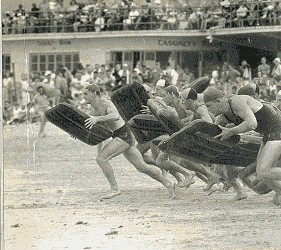 |
in the surfoplane race at Manly carnival in the 1930s. (Clovelly SLSC)" Cardigan: Icon (2008) pages 130-131. |
 |
Sydney, 1938. Daily Telegraph, 7 October 1938, page 7. |
|
art of surf board riding at Bondi yesterday. She is shown here with her tuitor, George Connors, champion surf board rider at bondi beach Club. Note Connor's swimming suit with the NSW logo, probably issued for interstate competition. Daily Telegraph, 29 November 1938, page 5. |
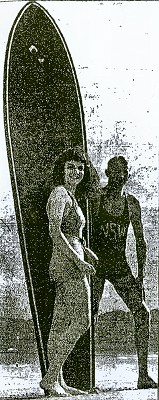 |
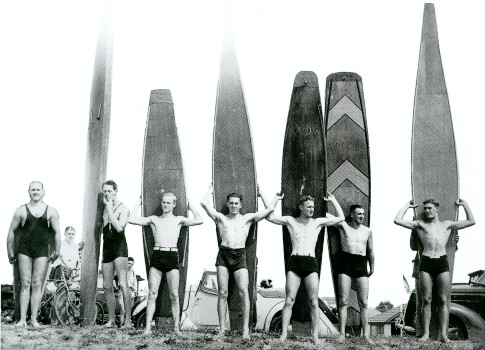 |
Northern beaches, Sydney, circa 1939. 1. Several races were held as selection trials for the 1939 -1940 Pan Pacific Games in Honolulu. 2. The photograph has been substantially cropped, the rider on the far left is missing the top half of his board. 3. Variations in board length and design. 4. Lou Morath, second from the right. Other riders should be identifiable. Longhurst, page 78. |
|
Duke Kahanamoku (left) welcomes the Australian team to the Pacific Games Honolulu, 1939. Wilson, page 36. |
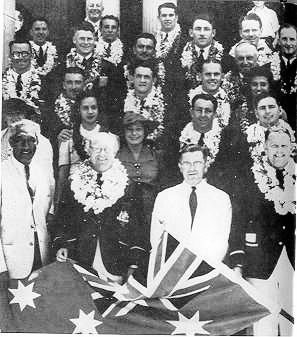 |

|
Blue Russell, Elton Ifould and other with 20 foot tandem board, Palm Beach, circa 1940. Brawley, page 56. |
 |
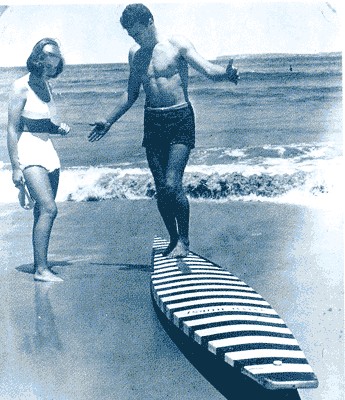 Noted North Bondi SLSC surfboard champion and surfboat sweep, Keith "Spaz" Hurst demonstrates his technique on his "Magpie" board, Bondi circa 1947. Elder: North Bondi SLSC (2006) page 103. |
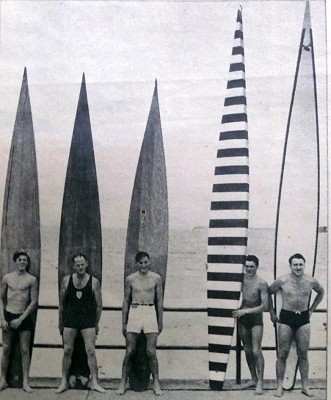 Bondi Surfboard Riders Pix Magazine, 18 January 1947 page 18. -Australia Day Week Edition |
|
Torquay, 1949. Photographs: Victorian Railways Published Jan. 28, 1949 Two surf board girls at Torquay, 1949. Bookmark: http://trove.nla.gov.au/version/182749226 Tandem Surfers, Torquay, 1949. Bookmark: http://www.slv.vic.gov.au/pictoria/gid/slv-pic-aab57798 Hollow Board Surfer, Torquay, 1949. Bookmark: http://www.slv.vic.gov.au/pictoria/gid/slv-pic-aab57798. |
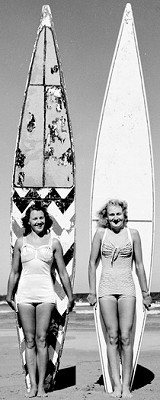 |
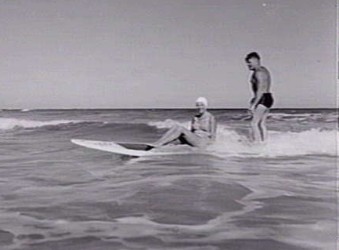 |
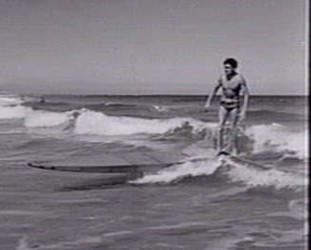 |
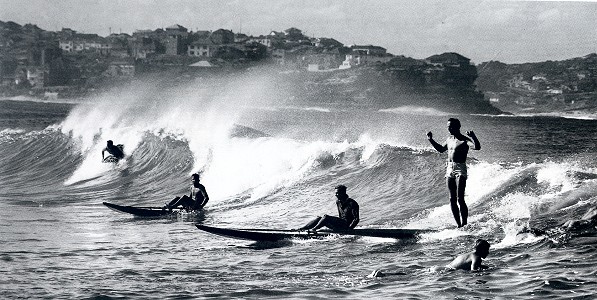
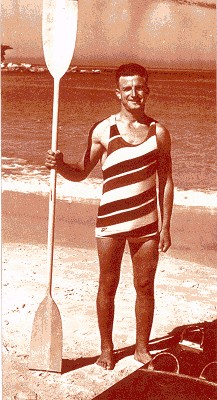 |
for the North Bondi SLSC and Olymic Kayak competitor, Bondi 1958. Elder: North Bondi SLSC (2006) page 125. |
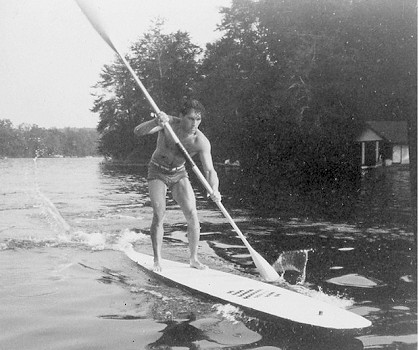 |
Stand Up Paddle Rider, circa 1940. The source and location are unknown. This is a hollow plywood board, the double bladed paddle possibly from a surf-ski. Note the chess-board decor on the deck. |

| home | catalogue | history | references | appendix |